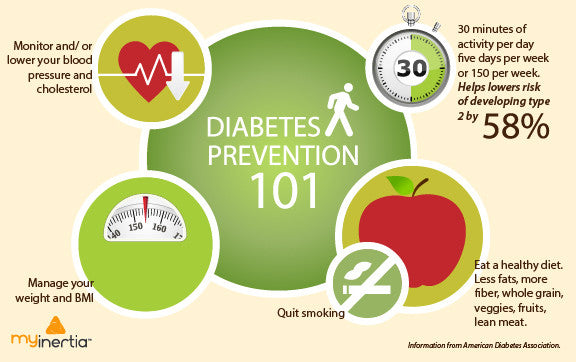
As terrifying as the prospect of daily needle pricks and surgical amputations may be, there is some good news when it comes to diabetes. Namely, how effective some simple measures are to prevent type II diabetes – or even reverse it. At Spring Solutions, we’re all about understanding our bodies in order to motivate ourselves to take better care of them. So, we decided to look closely at diabetes – what goes wrong to cause it, how it’s treated, and how you can prevent it from affecting your life.
What is diabetes?
Diabetes is an umbrella term for a handful of disorders that interrupt your body’s production of, or response to, the hormone insulin. Normally, as you digest food, your body breaks it down into glucose, a sugar molecule. Insulin serves as a sort of chemical passcode to “open up” the cells in your bloodstream so they can carry these glucose molecules to other parts of your body. That way, your body transports glucose into the parts of the body where it can be used or stored as energy. But when a person has diabetes, some part of this system malfunctions.
There are several types of diabetes, but the two most common kinds are type 1 and type 2. People with type 1 diabetes develop the disorder in their childhood because their immune systems attack the cells that produce insulin. Type 2 diabetes is much more common – and preventable, sometimes even reversible. So, we’re going to focus on type 2.
Ok, then tell me more about type 2.
Well, first of all, it’s super common – about 95 out of 100 people with diabetes have type 2. And since it can rear its ugly head at any age, it’s only becoming more prevalent. In fact, it used to be called adult-onset diabetes. But so many children started developing it, that became a misnomer.
So, a lot of people have it. How do they get it?
There are a lot of risk factors for type 2 diabetes, and it’s usually a combination of things. Some people are genetically predisposed, for instance, or they have faulty communication between cells. But let’s focus on the causes that you can control: diet and exercise.
When you over eat, or carry extra weight, you are likely to have elevated blood sugar levels. Basically, your body breaks down the food you eat into glucose, but there is too much glucose for your insulin to store in your cells. So, the insulin stops working as well. (Doctors calls this insulin resistance.) First, your pancreas starts producing extra insulin to try to catch up to the elevated glucose levels. But eventually, no matter how hard your pancreas works to produce insulin, it lags behind, leaving you with highly elevated blood sugar levels.
Yikes! What were you saying earlier about good news?
The good news is that with type 2 diabetes, your lifestyle changes have a profound effect on your health! First of all, you don’t go from zero to full-blown diabetes. Your doctor will give you a heads up when you have prediabetes – that is, elevated blood sugar levels that haven’t reached the diabetes threshold yet.
A lot of this is in your hands. As we mentioned before on the Spring Solutions blog, losing just 10 percent of your body weight cuts your risk of developing type 2 diabetes by 56 percent. That is a dramatic change! Exercise, even light exercise like walking, helps your body use insulin and lower your blood sugar levels. Just thirty minutes of walking a day cuts your risk by a third.
And of course, Spring Solutions is here to help. The Spring Solutions diet doesn’t just cut calories and help you lose weight, which already makes a huge difference. We also help reset your hormonal balances to healthy levels! That way, the transition is much more comfortable, and your insulin production gets the TLC it needs.
@ Kirstie Fortescue

